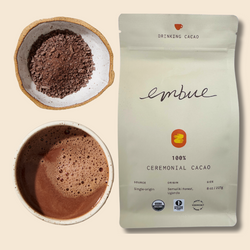Cacao Varieties – Not a simple question!
There is a lot of buzz these days in the cacao world about variety. We often get the question, “What variety is your cacao?” At first glance, this might seem like a simple question, but as is often the case with cacao, it never is!
“Practically every popular resource divides cacáo into 3 primary varietals: Criollo, Forastero, & Trinitario; an overly simplistic & deeply flawed scheme, & by no means hard & fast distinctions because cacáo is notoriously promiscuous, engendering classification nightmares, & often plain guesswork. With so much genetic cross-pollination, hybridization, mutation, & recombination, it’s rare & increasingly difficult to find any pure forms.” – C-Spot.com
In the last decade, our understanding of cacao variety and genetics has undergone a pretty major transformation, going from 3 main varietals to over 10. Genetic research has re-grouped cacao into new primary strains, while at the same time our understanding of classification challenges has grown. Cacao is a promiscuous plant that easily cross-breeds among varieties. It is not uncommon to find multiple varieties of cacao on one tree alone. This, along with how certain hybrid varieties out-compete others, makes it challenging to pin down a variety without genetic testing. It makes claims of pure forms equally dubious, unless under remote or highly controlled conditions.
At the same time, many seeming varietal names serve more as a colloquial reference to the local cacao that is grown, instead of an actual genetic varietal. "Criollo" for example, originated as a version of "native", meaning the cacao grown in a particular region. Many areas claim to have criollo cacao, but they are very different genetics, and have more cultural implication than genetic.
In response, the world of fine flavor chocolate and bean-to-bar chocolate makers have moved to an emphasis on terroir (the synthesis of highly local variables that affect quality) over strict adherence to variety. With cacao, the same genetics can even taste very different grown in different regions or countries. Regional flavor profiles and vintages from certain crops are becoming like the world of wine.
As the picture at a scientific level gets more complex, marketing continues to confuse matters as there are many false claims out there about variety. Take so-called ‘arriba nacional’ as an example. Many packages of cacao bear this name as if in reference to a high-quality variety. The reality is that it is not even a variety name, it is just a marketing term that doesn’t mean anything. Nacional is indeed a rare and sought after primary strain of cacao, but arriba simply means “above” in Spanish, referring to a historical growing region in Ecuador, not an actual variety.
Another claim often found in the world of cacao ceremony, is that criollo cacao is a superior variety for ceremony. Criollo is indeed a variety, highly sought after in the fine flavor chocolate world. It’s a sublime chocolate if you have the chance to taste it. It is rare both because it is much more susceptible to disease, making it a harder tree to make a living from, and because cross-pollination has often out-competed it. So as a start, claims of even having criollo cacao should raise doubt, particularly in the absence of confirmed genetic testing and a controlled growing zone not subject to other modern varieties. Part of the reason that criollo has such a great flavor profile is that it is low in alkaloids, the bitter compounds in cacao. So it has the chocolate flavor without the bitterness. The alkaloids in this case are theobromine, a main component of the ceremonial use of cacao. Theobromine is a stimulant that increases focus and is also more centered on the heart than caffeine, helping stimulate increased blood flow. So criollo is actually lower in compounds that are psychoactive in cacao.
In answer to the question about what variety of cacao we carry at embue cacao, the answer is we don’t know, nor are we particularly concerned. In the absence of regular genetic testing (an expensive undertaking), there is no sure way to know. If it were a guarantee of quality, perhaps it would be worthwhile, but there are many factors that influence the quality of cacao beyond genetics (such as soil, climate, weather conditions, fermentation, sun-drying, & roasting), so our focus has been on the end product. As with the movement in the craft chocolate world, our emphasis is on quality processes, at each step of the way. When those lineup, we get the great taste and potent cacao that we sell and hear such positive feedback about.
So make sure to do your own research next time you come across claims purity of variety and superiority of potency!








